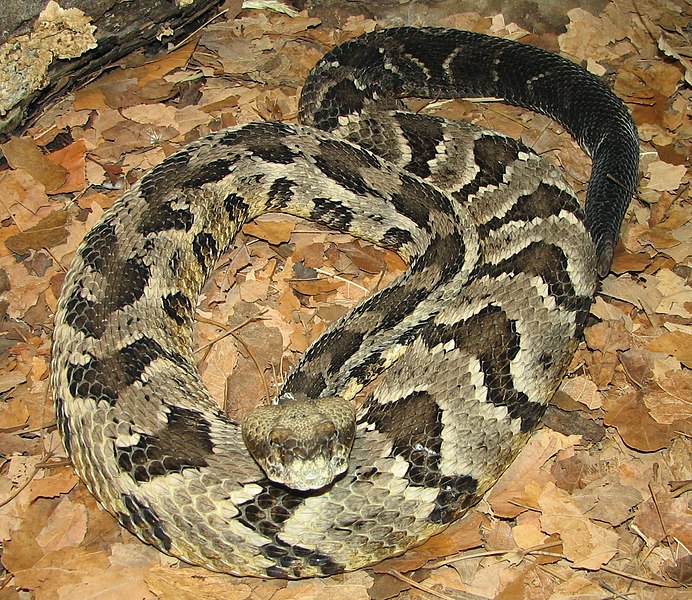 |
| Typical Landscape at the Whodunit Mine Photo by P. L. Chadwick |
No this isn’t a tale of the nether regions it is the story
about the discovery of a long abandoned mine in western Connecticut . For lack of a better name we might as well
call it the “Whodunit Mine.” The mine is
on private property, and its owner is in the business of raising big dogs. He will loose the hounds on anyone who goes
trespassing on his property, so let that be a warning.
The old mine was discovered by the owner when he wanted the
zoning classification of his property changed from residential to farming. There were several old pits in the ground the
zoning enforcement officer wanted filled in as part of the change. This got the curiosity of the owner that led
to the discovery of several acres covered with pits and several hundred feet of
trenching giving the property the appearance of a battlefield.
 |
| The site also contains timber rattlesnakes Photo by Trisha M. Shears |
Somewhere in the process last April 2012 he contacted me
because I operate a school for prospectors teaching the fundamentals of
prospecting that I try to tailor to the individual. The owner already knew how to pan for gold,
what he was really curious about was what he had on his property. We made a trip to the site where we looked
the site over and discovered plenty of evidence of prior mining activity with
many prospecting pits and several hundred feet of trenching. This activity covered several acres of the
property. From prior experience I know
what this kind of work costs in money and labor.
In the past I had some involvement with Robert J. Altamura
who worked for the Connecticut Geological and Natural History Survey when he
prepared a map of the Bedrock Mines and Quarries of Connecticut. Since I had a copy of the map and its
accompanying booklet I checked and the site wasn’t on the map. With that I contacted Margaret Thomas the
state geologist and told her I’d found an unlisted mine.
 |
| Another creepy-crawler found on the property is the copperhead Photo by Trisha M. Shears |
Because the owner was a contractor he had some construction
equipment including a backhoe that he used to explore the old mine. He called me on the phone one morning in
early May to tell me he had dug into what turned out to be an apparent
mineshaft and had discovered many old bottles and other artifacts. I told him to stop digging and I’d contact
the state archeologist. The state
archaeologist told me he couldn’t come until May 24.
In the meantime I also contacted the Yale
Peabody Museum Hofstra University
What happened on the 24th was the meeting of a
blue ribbon panel consisting of one archaeologist, three geologists and two
engineers. The net result of the meeting
was we couldn’t determine what they had been mining.
The mine contains the following minerals: amphibolite,
beryl, corundum, ilmenite, kyanite magnetite, pyrites talc and other minerals
that are yet to be identified. We also
found one small speck of gold.
My own theory of this is:
The digging probably happened in the 1850’s after somebody
came back from the California Gold Rush and decided there was gold on this
property and went looking for it. The
debris filling the mineshaft has been dated to the post Civil War Era by the
state archaeologist. The mineshaft
yielded what appears to be a cast iron ladle that could be used in assay work.
This tale is going to be continued!

No comments:
Post a Comment